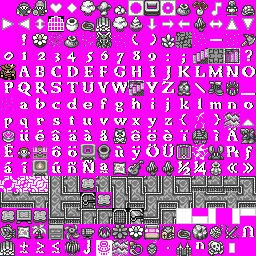

Yesterday I went to le Grand Palais in Paris to attend " Game Story". On a different note, I am also fascinated by rotary dials and the way they subtly conveyed feedback to the users. Of course it's more interesting to think about old school physical phone dials as opposed to the visual versions one can find on smartphones lately. I'd be happy to play Super Mario with a phone dial, if possible, perhaps that can be an intriguing research avenue for the laboratory. Why do I blog this? Working on the book leads to curious discoveries. 50」, only showcased how unnecessary the additional directions were gameplay-wise." Unfortunately, as great as this might sound on paper, in reality only very few games had actual 12-WAY support, and those that did, like it's the case of「BATTLE FIELD」and「CAL. The only real advantage of the rotary joysticks is that although they can only be pushed in the same 8 directions than the standard 8-WAY joysticks, they come with a special 12-WAY switch box that allows them to be rotated in 12 different positions, thus giving the player the ability to face and shoot in 4 additional directions not possible with the standard joysticks. So when the '90s kicked in with SNK dropping their trademark control scheme to go with their new multi-game NEO-GEO MVS system, and as better and more advanced shooting games were being released, rotary joysticks pretty much vanished into thin air from the arcade scene without anyone really noticing or caring. " as fun as rotary joysticks might have been at the time, in the end they failed to become more than a novelty control gimmick. One of the earliest game ( Noughts And Crosses) used a phone rotary dial but it was certainly more advanced later on in Japan with the rotary joysticks described on this website: and of course they were employed to use video games. Rotary dials are one step beyond as it introduces a sort of discrete interactions in the use of knobs. Potentiometers and knobs were of course the first lineages in terms of game controllers think about Tennis for Two or Pong.

and one of the most intriguing example is certainly the existence of rotary dials. Working on the book about game controllers, I did some research about the first game peripherals. The Star Wars starfighter battle book series is a good start but still. with weird paper game mechanics so that players can "interact" with them? I'm pretty sure this exist.
DWARF FORTRESS TILESET COMIC SANS HOW TO
Plus, I find this interesting because it obviously leads to curious game design propositions, and bc it makes me think of how to take this into consideration in video game design itself: how would you enable the other persons around a player to use paper to improve the game? Can one create a game in which the person holding the controller needs a friend to use a hand-drawn map to help her?īesides, no one here thought of booklets with video game grids, Zelda open world maps in B&W versions, Super Mario Sunshine levels. I've seen once kids playing together on paper and I enjoyed observing how they "filled the gap", how the absence of the mighty computer was turned into creative engine. It's intriguing because it reveals how a game mechanic, or a graphic pattern, circulates and mutates to create a curious experience. Not just because you see kids' fantasies and ways to change mediums. Why do I blog this? This is definitely fascinating.


 0 kommentar(er)
0 kommentar(er)
